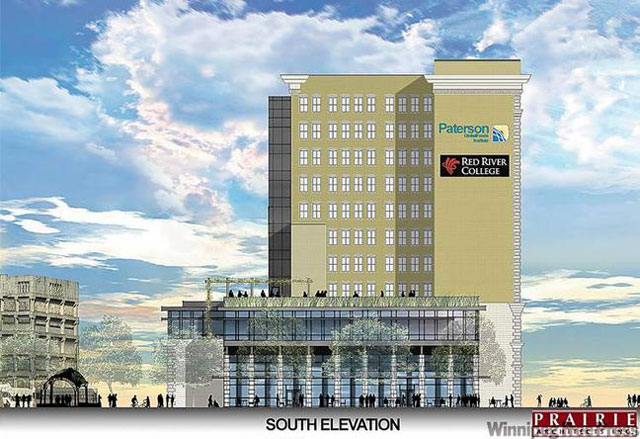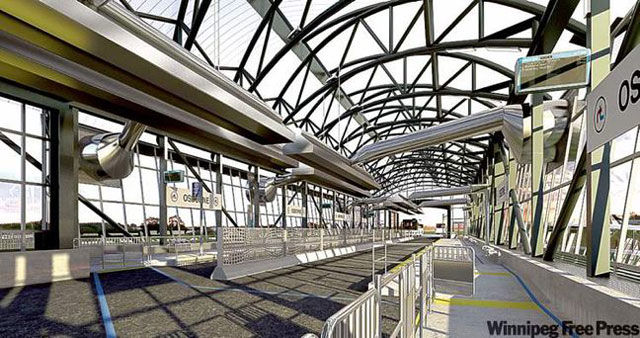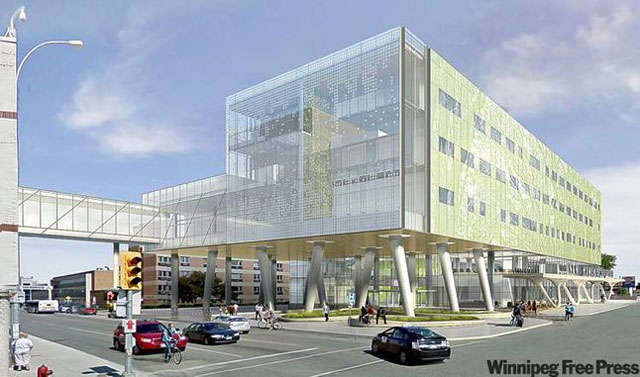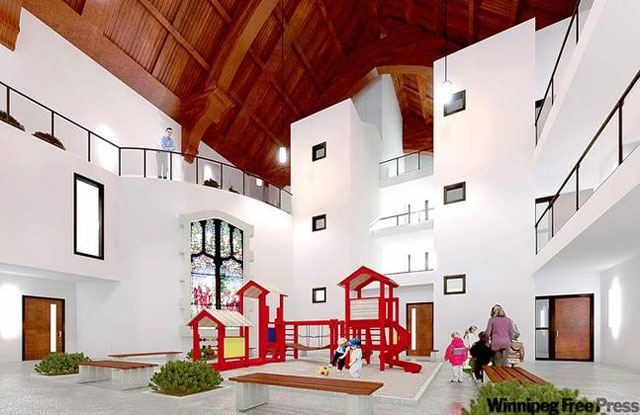Downtown's status symbol - Union tower conversion vital to renaissance
- Details

Pedestrians gazed in wonder as her steel frame rose high above the city in the summer of 1903. The Manitoba Free Press wrote: "The huge steel stanchions have reached a point skyward where it almost begins to make one dizzy to view the upward progress." She was a symbol that this confident young city had arrived on the national stage, a declaration that it could compete with the great cities of the east.
Union Bank Tower at the apex of the bend in Main Street took its place in Winnipeg's skyline more than a century ago. Many of the great events in our city's history have happened in her shadow, yet most of us pass by without appreciating her significance or engaging in the stories she can tell.
Modern-day revitalization will inject energy into downtown when it becomes home to Red River College students.
Development needs managing - Strip-mall additions to Corydon Avenue detract from popular area's overall charms
- Details

As another long winter fades into memory, the temperatures have begun to rise and leaves are starting to appear on the trees. A new season is finally upon us. For many, it's simply known as spring. For others, the colourful umbrellas popping open in front of restaurants across the city are a welcome sign patio season has finally returned.
The cornerstone of Winnipeg's patio culture is, of course, Corydon Avenue, which has blossomed in recent years to become one of Winnipeg's few vibrant pedestrian areas. On a warm June evening, the sidewalks overflow with activity as people enjoy a trademark gelato, do some shopping or simply spend time watching the crowds. It is an urban experience that at times is comparable to that found on streets like Robson in Vancouver or Whyte Avenue in Edmonton.
Urban issues UNDER THE RADAR - Big cities' challenges overlooked in current federal election talk
- Details

Snow-capped peaks reflecting off a clear alpine lake, a turbulent river cascading over a rocky ledge and golden wheat fields swaying in a Prairie wind. These are the alluring images that make up the Canadian national identity.
The Canadian reality, however, is a stark contrast. Ours is an urban nation, one of the most metropolitan on earth. With more than 80 per cent of us living in cities, Canada is even more urbanized than countries such as Germany, France and Japan.
As we head into another federal election, policy debate among political parties and candidates is exposing an absence of urban issues in the national dialogue. The discussion of the federal role in the growth of our cities has generally been limited to the issues of transfer payments and infrastructure programs. There appears to be a lack of recognition that Canada's prosperity, global competitiveness and quality of life are substantially controlled by its urban areas and the government policies that affect them.
Good designs, good neighbours - WRHA projects consider needs of clients and communities
- Details

Public debate over architecture and urban design is a rare occurrence in Winnipeg. Generally, discussion about our city's built form ventures no deeper than the subject of potholes or traffic circles. One exception to this came in early 2009 as the new head office for the Winnipeg Regional Health Authority took shape on Main Street. Politicians, concerned citizens and the media engaged in an uncharacteristic dialogue about the development's design and urban response.
It was argued the removal of elements such as the pharmacy and ground-level retail space diminished the building's interaction with its neighbourhood and concern was raised over the expression of an open-air parkade fronting one of the city's most important streets.
Winnipeg's first community birth centre is under construction at the corner of St. Anne's Road and St. Mary's Road.
A new purpose for old buildings - Recycling helps save money and energy
- Details

It may not be as simple as throwing a building into a giant blue box and dragging it to the curb, but with construction costs rising and sustainable design growing in importance, the practice of recycling buildings has become a significant development trend around the world.
All cities are filled with buildings that have outlived their original purpose. As an alternative to demolition, these structures are more often being looked at as a 'mine' of raw materials for new development. The recycling of buildings can be as simple as preserving specific components and reusing them in new construction. An excellent example of this is the historic facades that were maintained as part of Red River College's downtown campus.


